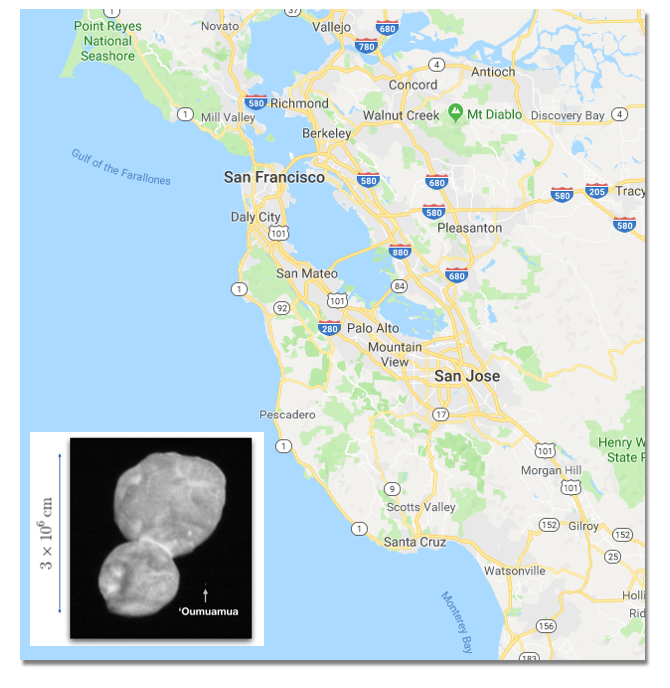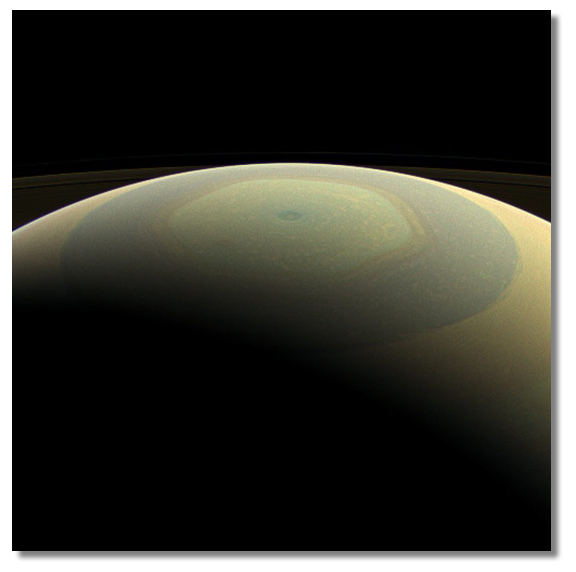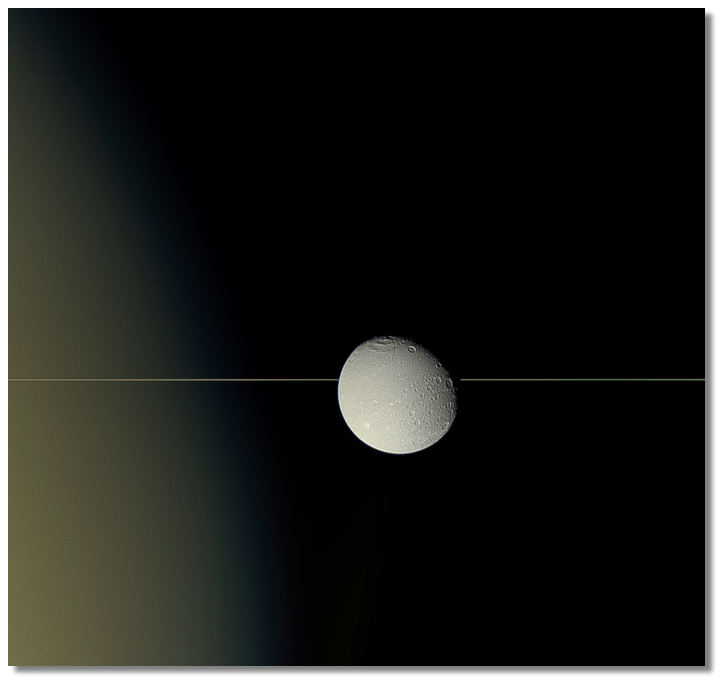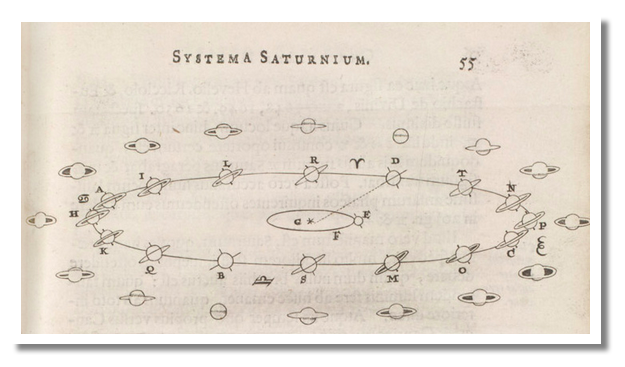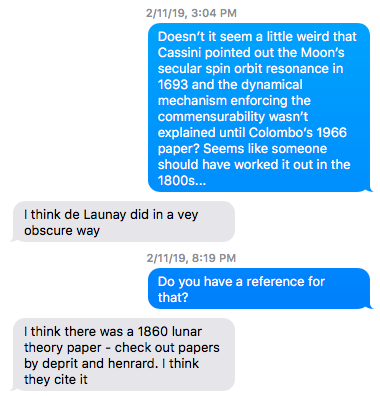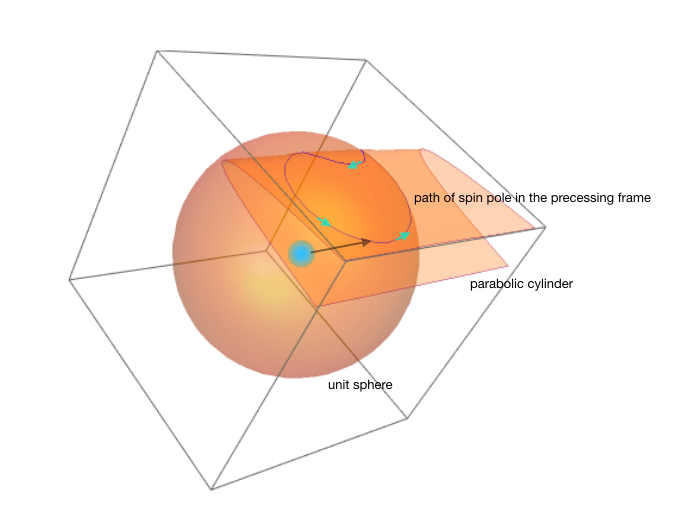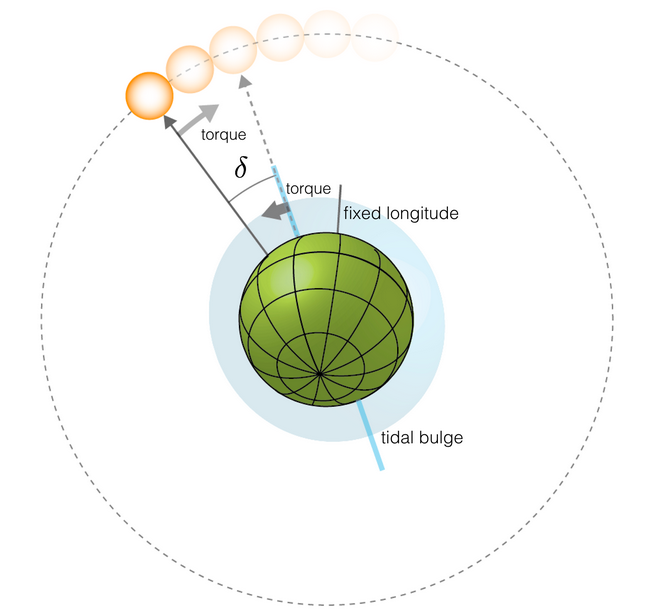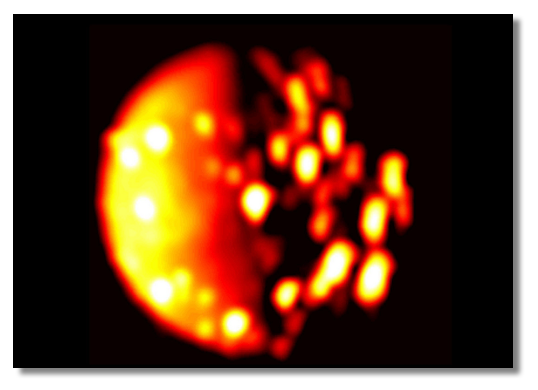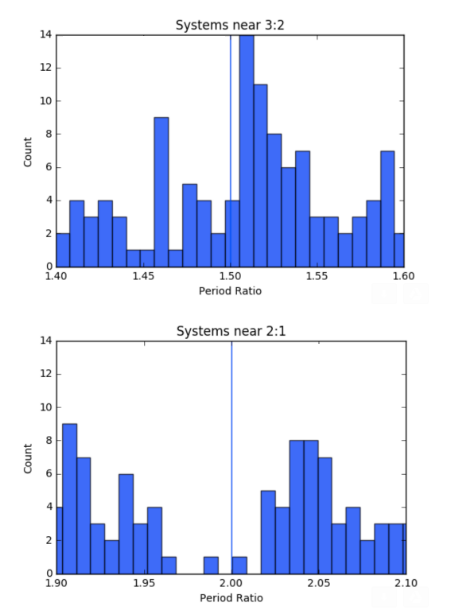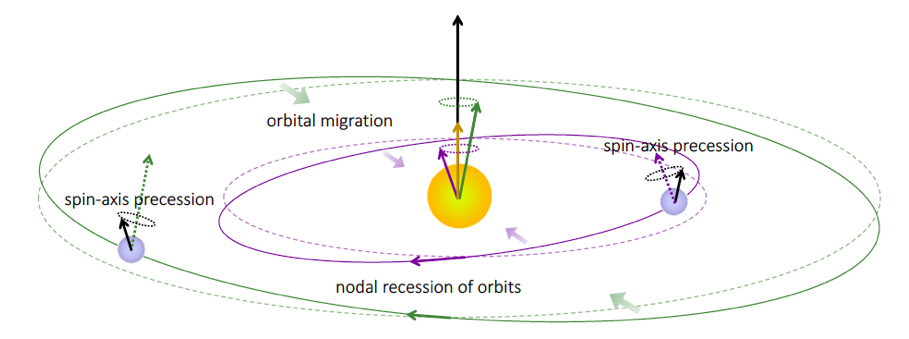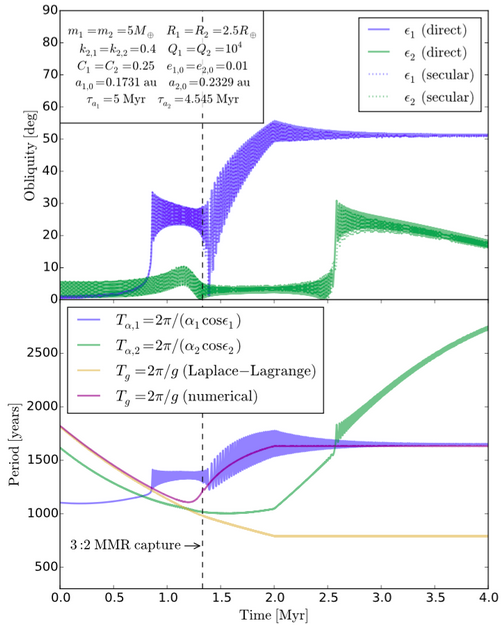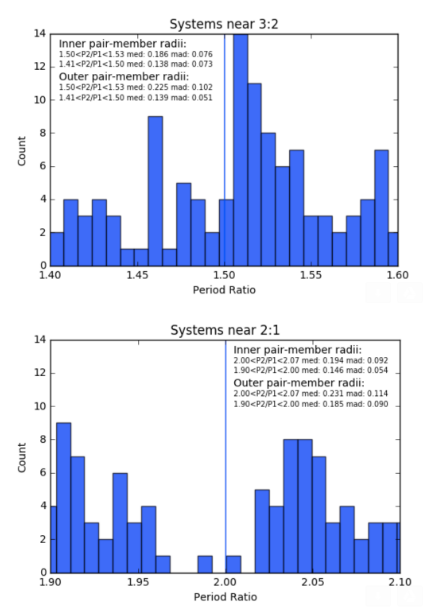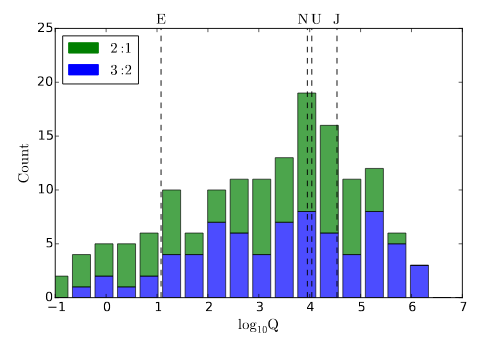‘Oumuamua slipped our grasp.

With JPL’s mission design tool, one can scroll wistfully through a fine-grained list of opportunities lost — a spaceport departure board overflowing with missed flights, all to a single exotic destination.
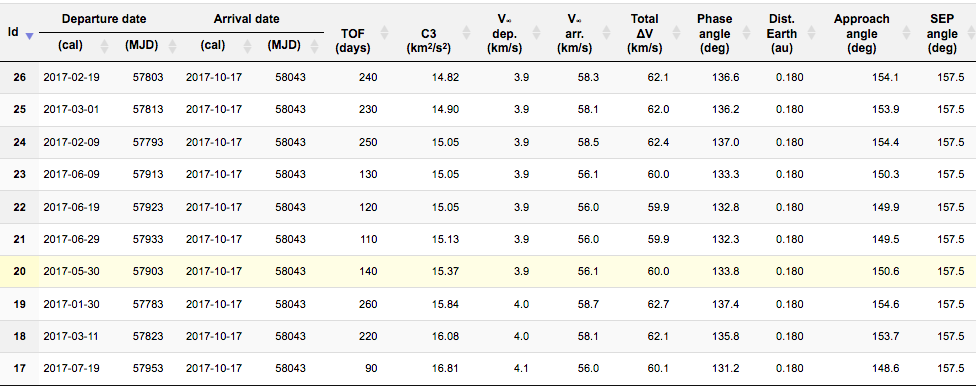
What could have been -- 2017-era economy-class tickets to 'Oumuamua.By any measure, ‘Oumuamua imparted an influence that exceeded its size. Its approximately 260-meter greatest extent is dwarfed by the recently visited 2014 MU69.
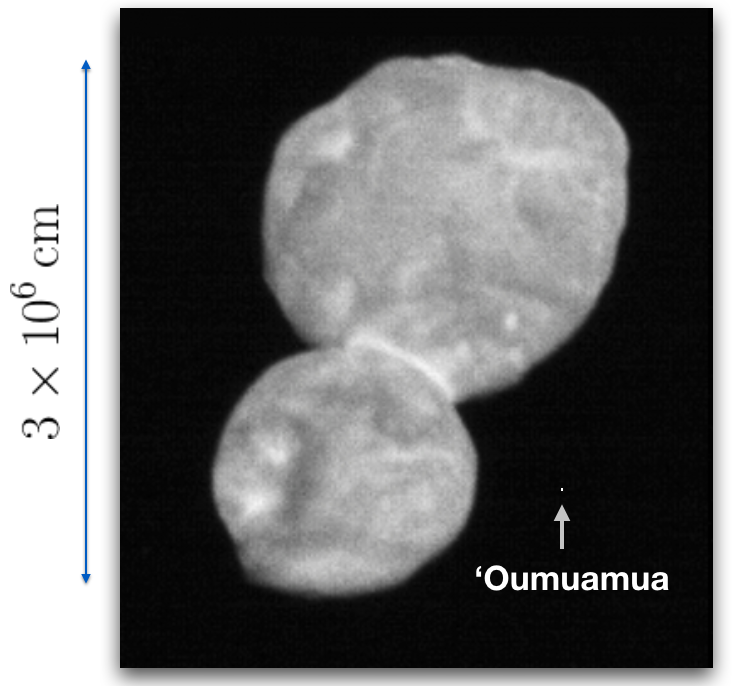
Which itself is not very large.
It’s interesting to look at the Google Trends listing for worldwide interest in ‘Oumuamua.
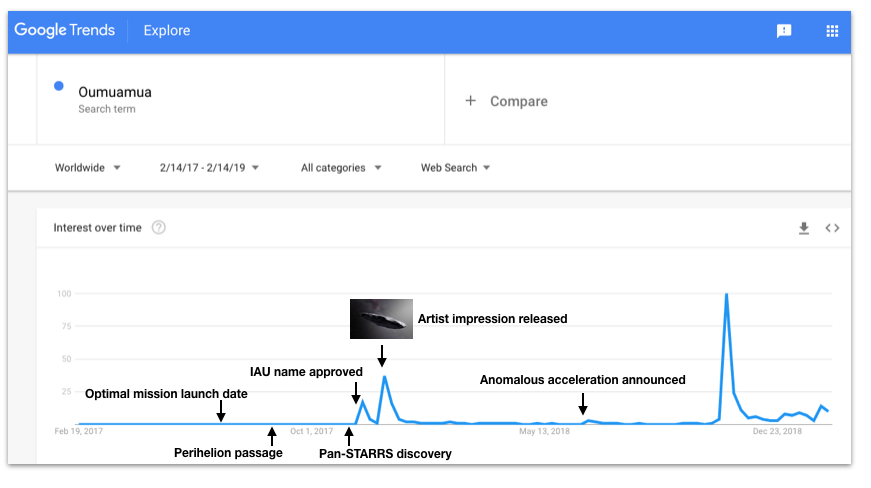
In mid-November 2017, a two-lobed burst of interest surrounded first the naming and then the release of ESO’s iconic artist’s impression of a menacing starship-like shard. A barely perceptible blip followed last Summer’s announcement that ‘Oumuamua’s trajectory was non-Keplerian, and then, in Fall 2018, boom, a veritable megastructure of attention.
‘Oumuamua’s visit was short enough so that the data obtained (mostly in the five compressed weeks following its initial discovery) is readily summarized. Our first detected interstellar visitor arrived with almost exactly the speed and direction that one would guess a priori for an object having the average local orbit in the disk of the Milky Way. In a sense, the Solar System ran across ‘Oumuamua rather than the other way around.
The spectrum of sunlight reflecting off ‘Oumuamua’s surface is skewed smoothly to the red, with no identifying bumps or dips. The first spectrum, obtained by Joseph Masiero, who was observing at the Palomar 200-inch telescope when word of the interstellar object was released, was typical.
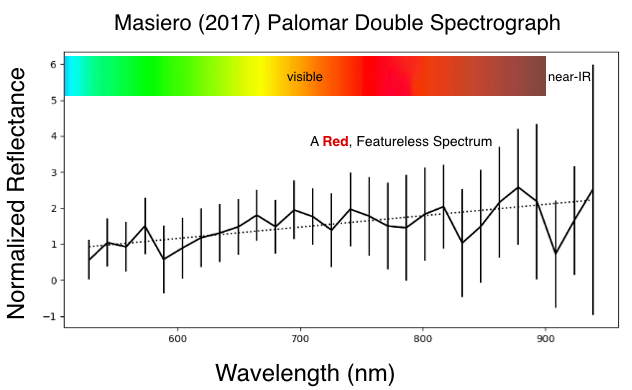
‘Oumuamua’s colors fall readily onto the locus defined by the various small-body constituents of the outer Solar System, which tend to list toward the reddish and the dark. Saturn’s moon Phoebe is the type of object one can bring to mind in this regard.
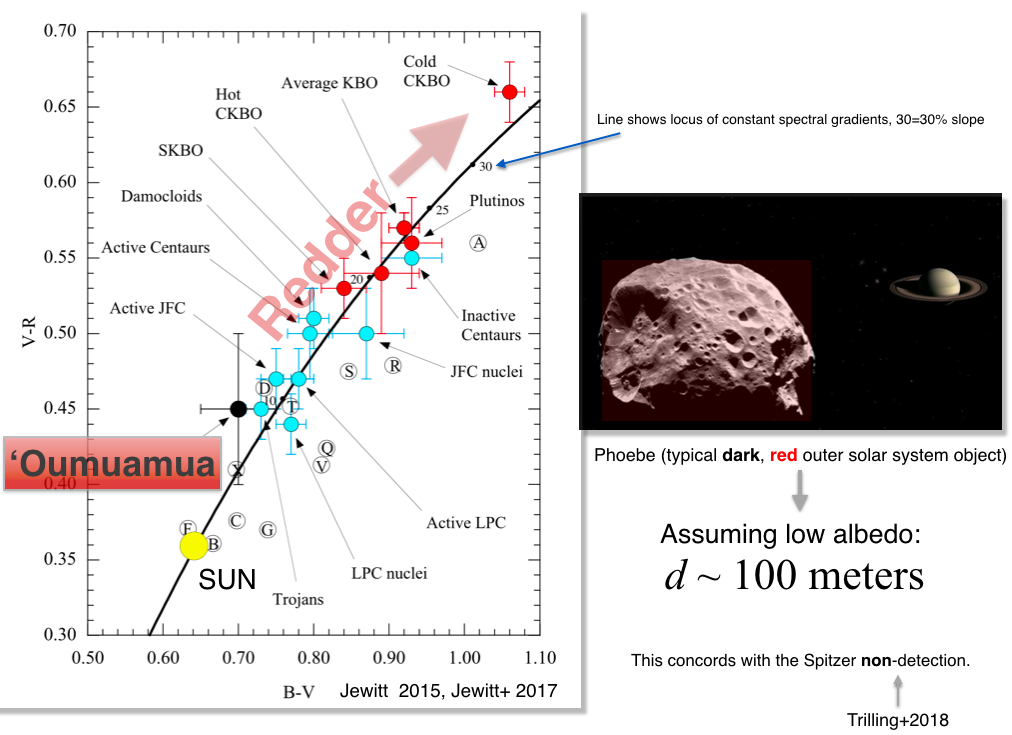
Solar System comets invariably spew out micron-sized particles, which are entrained in the gas (mostly water vapor) that erupts from their sun-warmed surfaces. It was thus generally expected that comets arriving from other solar systems would behave in similar fashion. Yet even in the deepest exposures — stacked together from multiple tracking images — ‘Oumuamua appeared completely point-like. Its lack of any observable coma placed stringent, spoonful-per-second limits on the amount of powdery dust emanating from its surface.
The diagram just below (with portions of the graphics taken from last October’s Sky and Telescope article) shows the highest-resolution portion ‘Oumuamua’s light curve stitched together from the data obtained with eight different telescopes. The reflected light signal varied periodically, with a dip-to-dip time scale of about 3.6 hours. There are lots of frequencies (and aliases) in the periodogram of the irregularly sampled data, the data gets proportionally noisier when the signal is at its dimmest, and the light curve does not quite repeat from pulse to pulse. The large peak-to-trough variation, and the more-or-less repetitive pattern suggest a highly elongated object, one that was tumbling chaotically end over end. The rotation period, moreover, was short enough so that ‘Oumumua would need to have some mild degree of physical strength to resist flying apart as it spins. It seems to be a solid object rather than a loosely consolidated rubble pile. The famous artist’s impression that populates a Google search on ‘Oumuamua proceeds from these basic features of the light curve.
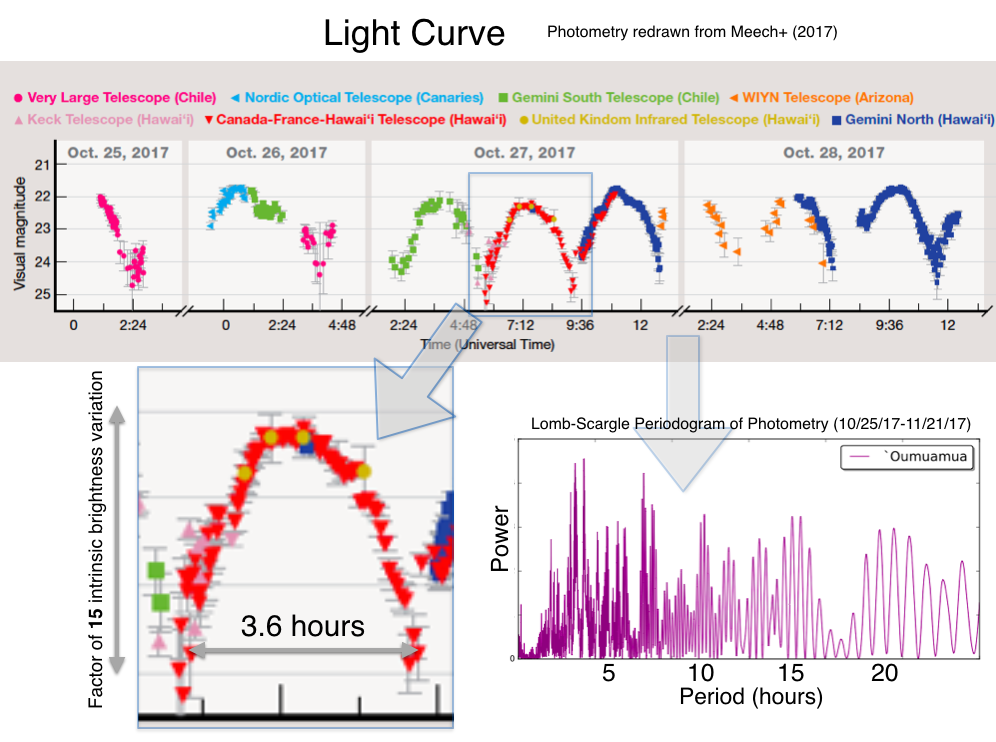
Each image from each telescope contributed to the determination of ‘Oumuamua’s trajectory. A careful analysis of all the data leads to the remarkable conclusion that ‘Oumuamua departed the Solar System more quickly than an object starting on the same orbit and that was subject only to the Sun’s gravity. In other words, an additional, anomalous acceleration acted on ‘Oumuamua. The effect was small, apparently exactly akin to reducing the mass of the Sun by 0.1%, but its effect was nonetheless very evident in the trajectory.
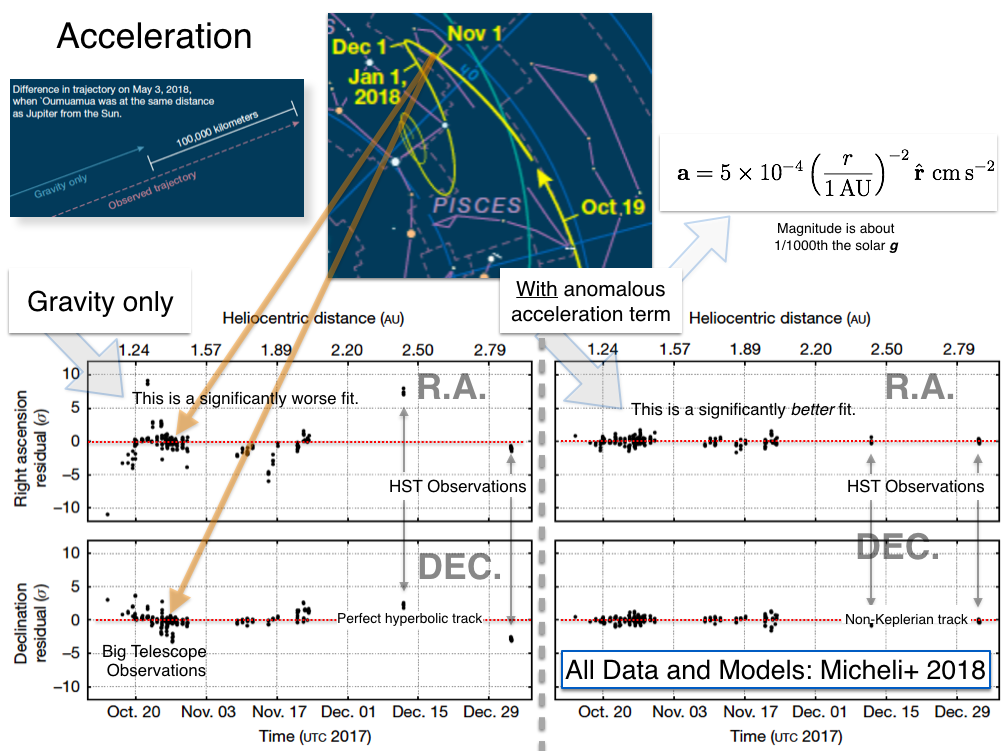
Comets routinely display non-gravitational accelerations of the type and the general magnitude that was observed for ‘Omuamua. Jets of sublimating gas (mostly water vapor) stream off the surface, and perform like stochastic rocket engines. The close-range photographs of comet 67/P Churyumov-Gerasimenko (the dramatic subject of the Rosetta Mission) show the process in action.
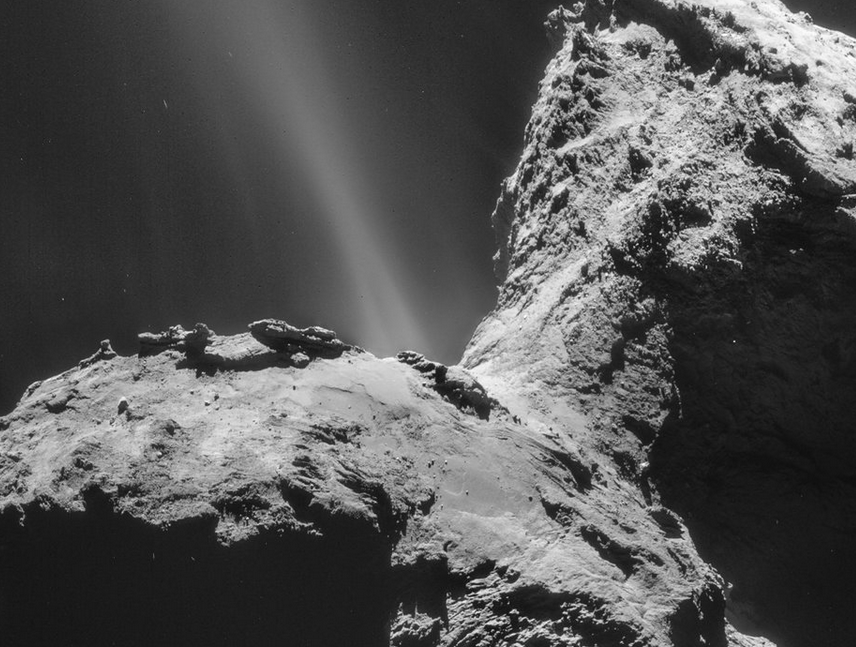
The catch, however, is that if outgassing is responsible for ‘Oumuamua’s acceleration, there was exceedingly little fine dust entrained in the gas. This disconnect has led to two proposals in which the acceleration arose not from a gas jet, but from solar radiation pressure. The first proposal (by Shmuel Bialy and Avi Loeb) contained the much-discussed speculation that ‘Oumuamua is an engineered solar sail. A paper published several weeks ago (to less media attention) by Amaya Moro-Martin suggests that ‘Oumuamua is a naturally formed fractal, a dust bunny-like aggregate formed in a protostellar disk with an extremely low density and an extremely high porosity. Such a structure would be readily accelerated by radiation pressure, and like the sail model, would have no need to spew gas-entrained micron-sized dust.
One can argue that the lack of micron-sized dust in an outgassing scenario isn’t all that unexpected. An icy body from an alien environment may have undergone compositional processing that was absent in the Solar System. Moreover, if the entrained dust particles were larger, say 100 microns in size, they would have gone undetected.
The Spitzer Space Telescope’s non-detection of re-radiated heat constrains ‘Oumuamua’s reflectivity and its physical size. Spitzer’s wavebands of observation rendered it particularly sensitive to emission from carbon dioxide and carbon monoxide gas in ‘Oumuamua’s vicinity, but neither species of molecule was detected. This is odd. Jets from Solar System comets are primarily composed of water vapor, but typically also contain carbon-based constituents. A water vapor jet from ‘Oumuamua is not directly ruled out by Spitzer, but one needs to argue that the water, in addition to being free of small dust, had a very low level of carbonation. A glass of melted ‘Oumuamua would have to be still, not sparkling.The jet interpretation for ‘Oumuamua’s acceleration can thus wriggle out of the Spitzer non-detection by positing a composition of icy material with a very low carbon-to-oxygen ratio, and it can simultaneously wriggle out of the coma non-detection by positing that very little micron-sized dust was embedded in the ice, but that’s an admittedly uncomfortable amount of wriggling. Requiring a pair of caveats is not very satisfactory, but it allows us the hypothesis that we were visited by a relatively mundane object rather than an exotic natural object or an artificial object. Moreover, with dim prospects for the emergence of additional observational data from a long-departed object that was faint to begin with, it’s unlikely that any of the three classes of competing explanations for ‘Oumuamua’s behavior will ever gain full credence or confirmation.
Interestingly, we do have some direct information on the composition of extrasolar planetesimals. This is obtained obtained by looking at accretion events onto white dwarfs, e.g. this paper by Wilson et al. Among the measurements of this type that have been made, there are a number of cases where the C/O ratios are below the naive limit for ‘Oumuamua (plotted below on Figure 3 of Wilson et al.)
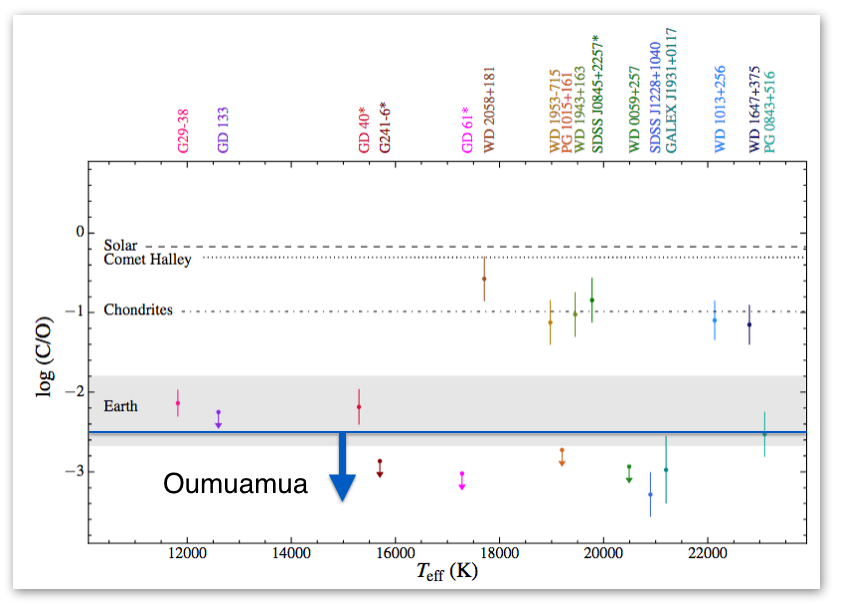
A paper published by Roman Rafikov last August raised an additional potential problem with the jet model for ‘Oumuamua’s anomalous acceleration. If a jet acts continuously (or on average, acts continuously) to exert the acceleration at a single point on the surface, then the force that provides the acceleration will also exert a torque, unless it is pushing exactly along one of the principal axes of inertia. This torque would have caused ‘Oumuamua to noticeably increase its rotation rate during the days that it was under close observation.
In a new paper lead-authored by Darryl Seligman and just posted to arXiv, we revisit the jet model, and imagine that the jet is created by ice that lies just below or right at the surface of ‘Oumuamua. If this is the true situation, then ‘Oumuamua’s jet will migrate rapidly across the body, and at any given moment, it will be strongest at the spot where the Sun’s rays are directly perpendicular to the surface. If we model ‘Oumuamua as an ellipsoid, the situation looks like the illustration just below, with comet 67/P Churyumov-Gerasimenko and its sub-solar jet shown to help motivate what we’re proposing:
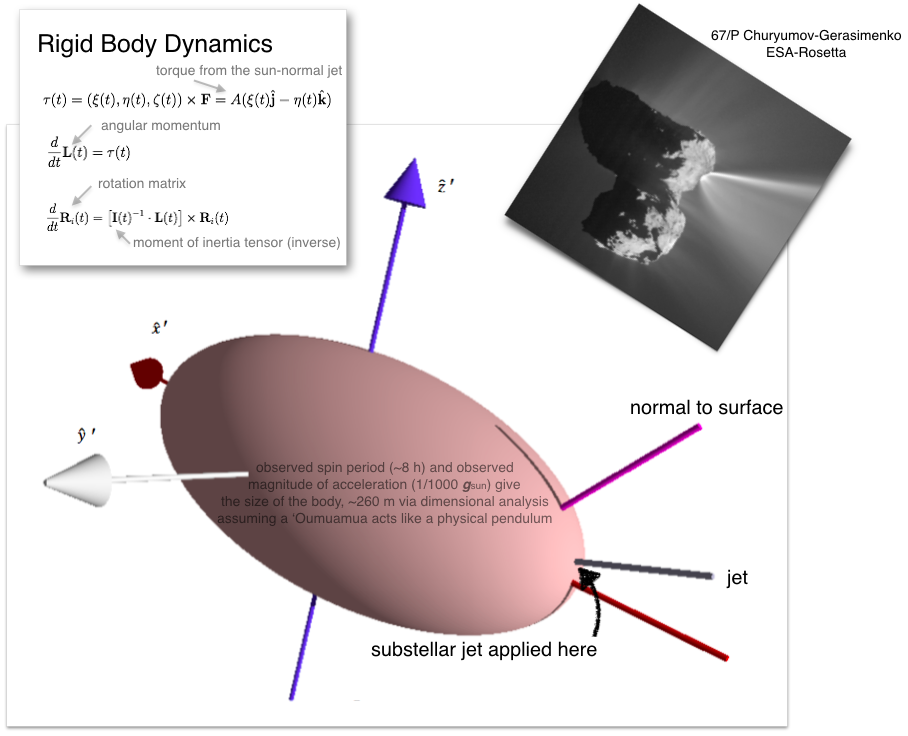
In an idealized situation in which ‘Oumuamua is a perfect triaxial ellipsoid with a long, an intermediate and a short axis, and where two of the axes lie exactly in ‘Oumuamua’s orbital plane, and where the jet is always located at the spot where the Sun is directly overhead, ‘Oumuamua’s motion resembles that of a pendulum. Here’s a movie made with the open-source ray tracing software POV-ray which implements the appropriate rigid-body dynamics:
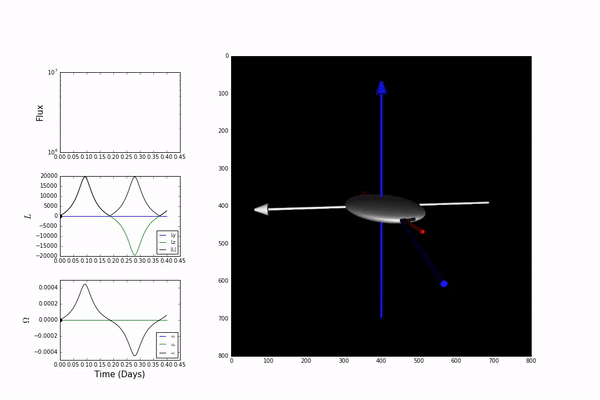
In the example shown above, we’ve assigned our idealized ‘Oumuamua a surfboard-like 9:4:1 long-intermediate-short axis ratio, and we’ve positioned the short axis so that it points perpendicular to the orbital plane. The action of the sublimation jet in this model produces a pendulum-like rotation of the body and implies a long semi-axis, \(a\sim 5A_{\rm ng}P^2/4\pi^2 \sim 260\,{\rm m}\), where \(A_{\rm ng}=2.5\times10^{-4}\,{\rm cm\,s^{-2}}\) was the observed non-gravitational acceleration during the high-cadence October observations, and \(P\sim8\,{\rm h}\) was the observed peak-to-trough-to-peak-to-trough-to-peak period of a full \(-\pi \rightarrow \pi \rightarrow -\pi\) oscillation.
Interestingly, the size \(a\sim260\,{\rm m}\) implied by 8 hour period and the \(0.001 g_{\odot}\) acceleration agrees perfectly with the completely independent estimates of `Oumuamua’s size that stemmed from its measured brightness, if we assume the 10% reflectivity that is appropriate to ices that have undergone long-duration exposure to the interstellar cosmic ray flux. The implication is that ‘Oumuamua was either like a pendulum that was rocking back and forth, or perhaps one that was barely swinging “over the top”. A more complete analysis allows us to make a snapshot of the range of possible motions for the idealized case. The angular position of the idealized ‘Oumuamua during its swing is on the x-axis, the varying angular speed of the swing is on the y-axis, and the color coding shows the period for each allowed trajectory. A nice feature of the motion is that as long as the aspect ratio, a:b:c has a\(\gg\)b, the period depends only very weakly on b and c.
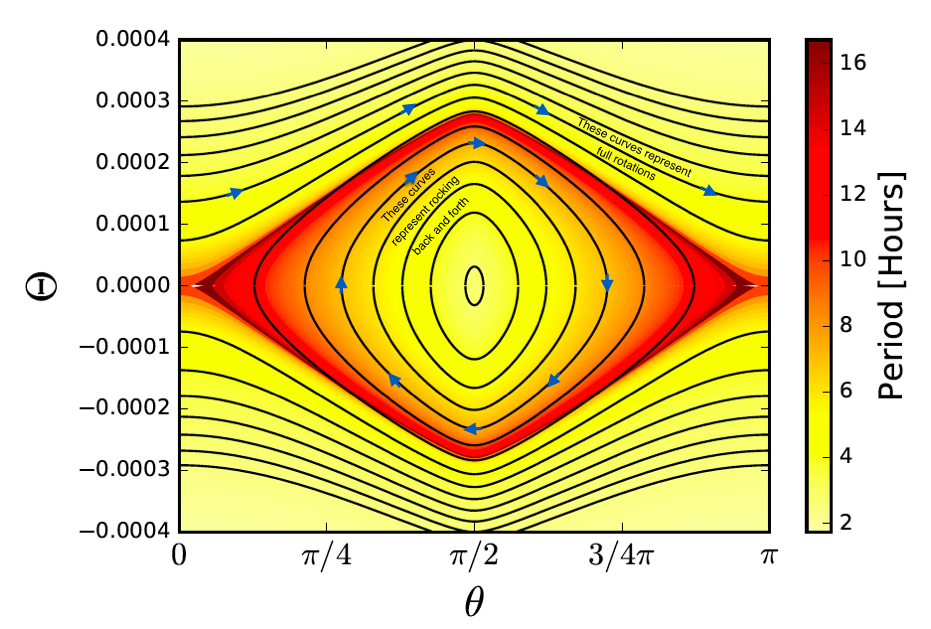
With our sub-stellar jet model, ‘Oumuamua doesn’t change its light curve period appreciably during the period that it was observed. This is because the torque from the sub-stellar jet spends equal time working with the instantaneous spin and working against it.
Assuming that ‘Oumuamua was a natural object, it likely had an uneven surface, possibly with regions of varying reflectivity, and it most certainly was not spinning with a principle moment of inertia aligned along its angular momentum vector. Moreover, there was likely a time-varying lag in the response of the jet, and the strength of the jet likely varied stochastically. With our ray-tracing model, we can readily gin up such complications and watch how they affect the motion. Here’s a version of the dynamics where ‘Oumuamua starts in a random orientation, and has a rough mottled surface pattern:
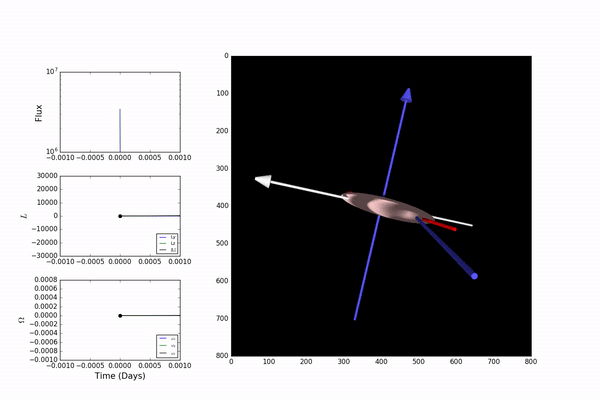
A more realistic model for 'Oumuamua. The sub-solar jet location and direction is shown by the wandering blue pole. (The light curve at the upper left charts the brightness of the body only, not the model axes!)In the simulation shown just above, we’re tracking ‘Oumuamua, and watching it tumble as it flies through its escaping orbit. The point of view is from an ultra-resolving telescope orbiting along with Earth. This means that the Sun’s illumination of the ‘Oumuamua model is consistent with what an observer on Earth would have seen had they had sufficient magnification. Removing the axes and the jet, we can sum up the brightness of all the pixels in each image to get a frame-by-frame light curve. Sampling the light curve at the actual cadence of the observations, and adding the correct amount of noise permits direct comparisons between various versions of the model and the observations. The first figure below shows the real data, and then various versions of what one would get with our ellipsoid models. No attempt at curve-fitting has been made here, just a proof of concept. The second figure below shows the power spectra of the data, our models, and the zeroed-out observations. It’s clear that if one wanted to, it would be quite possible to fit the light curve pretty well with models of this general type.
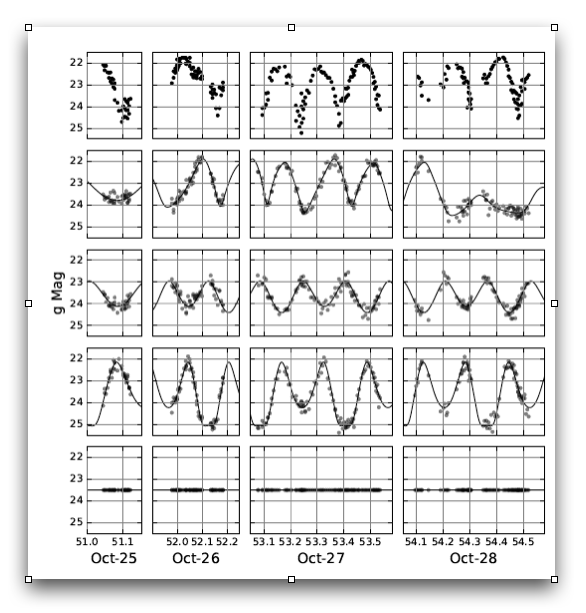
Real and synthetic observations of Oumuamua from October 25th-28th 2017. The rows show the real observations (top), synthetic observations for 9:4:1 (upper middle) , 10:1:1 (middle), and 10:10:1 (lower middle) models, as well as an unvarying light curve. The solid lines show the underlying light curve for each model, and the transparent points show synthetic observations sampled at the same epochs that 'Oumuamua was observed, and perturbed with magnitude-dependant Gaussian noise inferred from the observations. The figure below shows the power spectrum for the data in each of the above plots.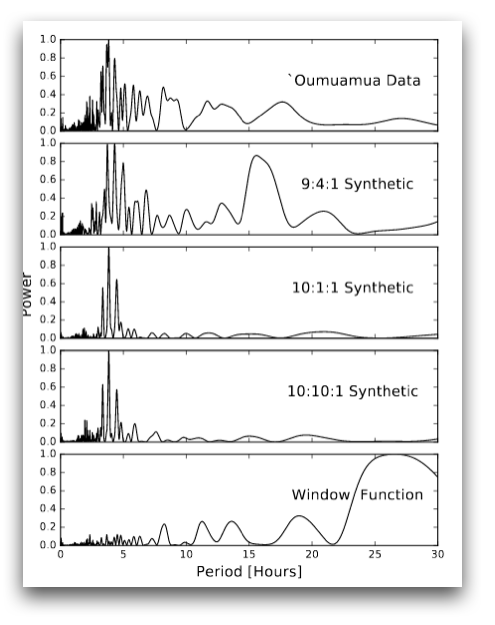
There’s a strong possibility that more interstellar objects will be detected fairly soon. A necessarily shaky extrapolation from the “statistics” of one object detected over several years by the Pan-STARRS survey implies that interstellar space is teeming with ‘Oumuamuas. The numbers are impressive — of order \(10^{26}\) bodies total in the Milky Way, totaling a hundred billion Earth masses. At any given moment, roughly one such object should be in the process of threading the 1AU sphere that encompasses Earth’s orbit around the Sun.

